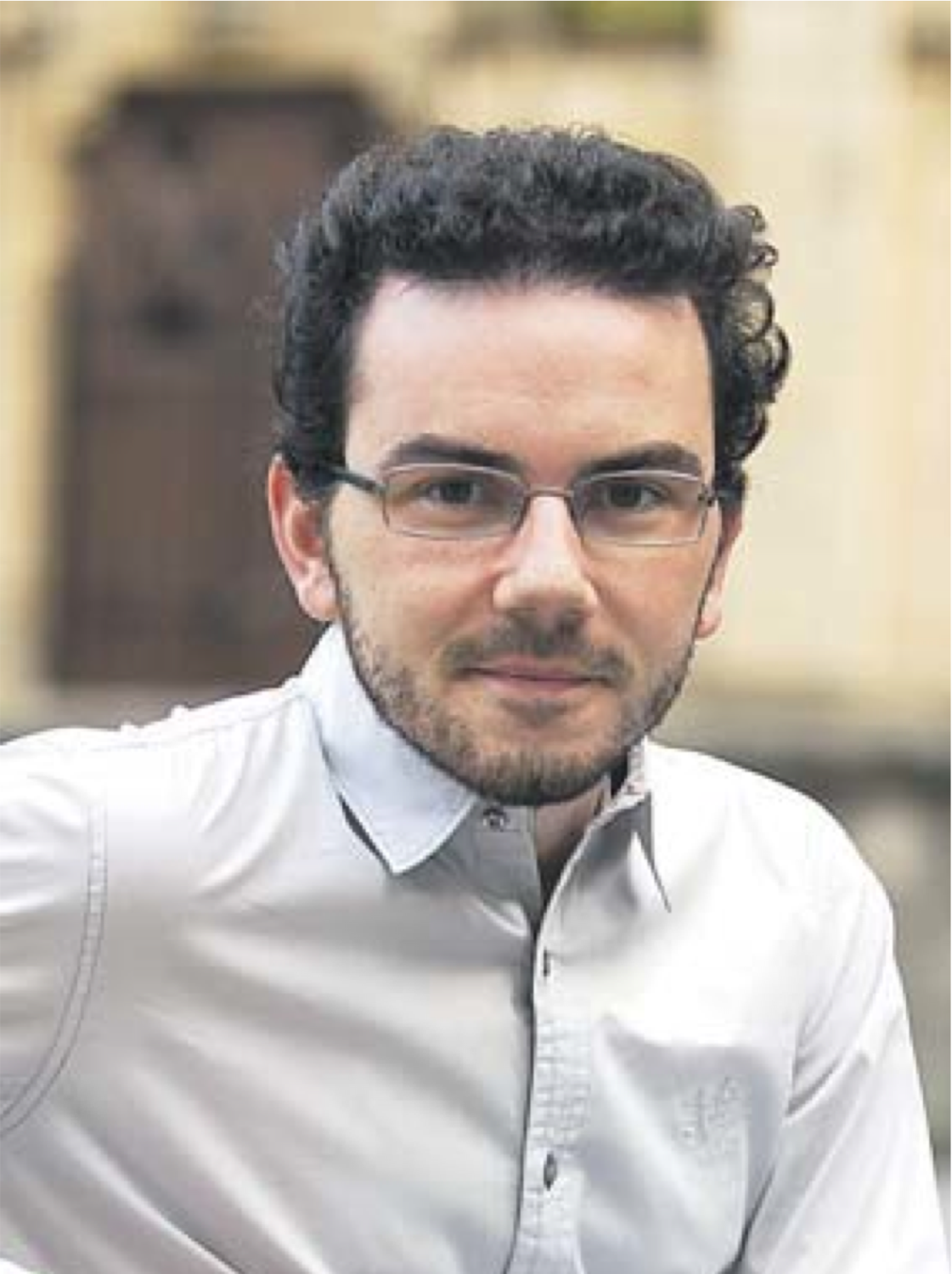Charge and spin transport in graphene devices, PhD Thesis by Luca Pietrobon
Luca Pietrobon, Pre-doctoral Researcher at the Nanodevices Group at nanoGUNE, receives his PhD at the University of the Basque Country (UPV/EHU) after the defense of his thesis project on Friday 5 June 2015. His research work, entitled “Charge and spin transport in graphene devices", has been developed under the supervision of the Nanodevices Group Leader and Ikerbasque Research Professor Dr. Luis E. Hueso.
An international committee including leading researchers in the field was selected to assess the research project:
- Dr. José María San Juan Núñez (UPV/EHU)
- Dr. Andrey Chuvilin (CIC nanoGUNE)
- Dr. Óscar Céspedes Boldoba (University of Leeds)
- Dra. Cristina Gómez Polo (Universidad Pública de Navarra)
- Dr. Andrés Ayuela Fernández (CSIC-UPV/EHU)

The defense consisted of a presentation by the candidate of the main aspects of the research project followed by a long discussion about the questions that each one of the members of the committee raised around the research works that has been carried out during the whole PhD period. After its final deliberation, the committee decided to award the candidate the Doctor Degree with the highest mention existing at the Spanish University (cum laude).
After the defense, we asked Dr. Pietrobon to explain us a bit more about his project:
Which was the subject of your thesis?
My main work involved designing, fabricating, and characterizing grapheme-based nanodevices, where our interest was to explore the transport of spin currents through graphene. Along with this, I was also involved in a couple of other side projects, like the study of hot electron injection in solid-state devices.
Why did you choose this subject?
Graphene is an extremely surprising material. During my master studies (M.Sc.) I was quite intrigued with the idea of putting my hands on this material and see some of its electrical characteristics "with my own eyes". Spintronics is also a very fascinating field of studies, especially for its promises of revolutionizing the computation industry. The combination of these two fields seemed to be challenging and very exciting.
Which methodology/techniques did you use?
A number of different experimental techniques came handy in fabricating (electron beam lithography, metal deposition and sputtering in ultra-high vacuum chambers, reactive ion etching), characterizing (Raman spectroscopy, x-ray diffraction, scanning electron microscopy) and measuring the electrical signals (in magnetic fields up to 9 T and temperatures down to 2.5 K) of these devices.
Which have been the main conclusions?
Graphene seems to be a material with great potential for spin transport. In fact, at least for the particular figures of merit we were looking at (spin diffusion length at cryogenic and room temperature) it is hardly challenged by other materials.
What could be the contribution of your research for present or future nanotechnologies?
The studies we conducted are mostly fundamental in scope: it is about investigating how particular materials behave more than making a device ready for mass production. A long process of sophisticated engineering would have to follow before any of our everyday nanotechnology could exploit these features. The long-term expectations in the field, however, are quite bold, with prospects of fundamentally changing the way or electronic processors work.
How do you feel now that you have finished the thesis?
I feel most thankful for having had a great environment in resources, connections and people, all of which made this work of mine possible.
